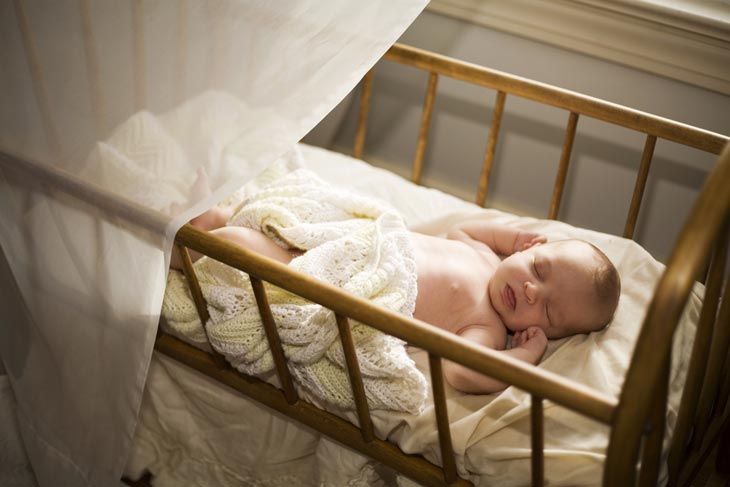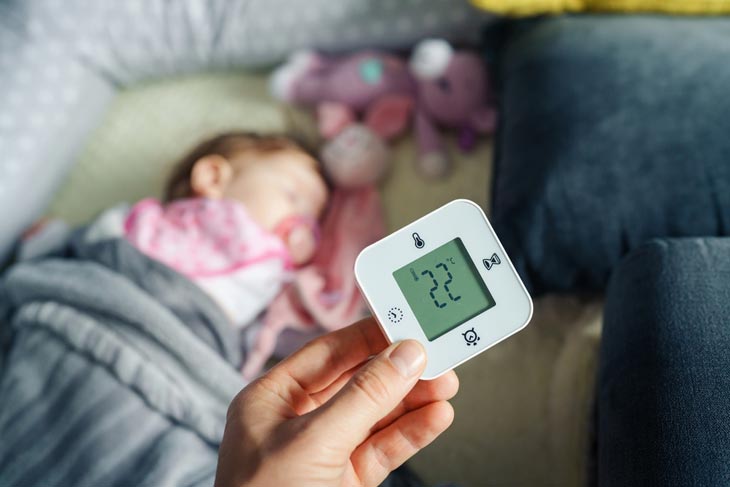Nurturing a newborn has never been a simple task. The appearance of a new member in the family requires skills in a lot of aspects, from materials like food and clothes to emotional bonds.
Therefore, it is understandable that many parents seek help when taking care of their children.
One of the frequently asked questions we’ve seen is how to keep baby warm at night without swaddle.
This article is here to assist those who are struggling with this problem. Keep reading to find your peace of mind!
Why Do We Have To Keep Our Baby Warm At Night?

Babies with their vulnerable bodies are not as adaptable to temperature change as adults. The ratio of an infant’s surface to the body weight is three times greater than that of an adult.
Therefore, babies can lose heat much quicker than adults.
That is a healthy newborn we’re talking about. Things can be much more complicated for premature and low-birthweight infants.
These babies often lack body fat or the ability to maintain their temperature, even in a warm environment.
If infants are not kept warm properly, they will use their oxygen and energy to generate heat, which will hinder their growth.
When the baby’s body temperature continues to decrease, it can even lead to mortality.
Thus, surrounding your little angels with a comfortable environment, especially at night when the temperature dropping usually happens, is very crucial!
How To Keep Baby Warm At Night Without Swaddle?
Swaddling is the practice of lightly wrapping the infants in a breathable blanket from the neck down. This act snugs him inside the swaddle blanket, which mimics the feeling of being inside the womb.
People believe that doing this gives their babies a sense of calm and security.
However, some babies don’t like being wrapped like that. In this case, you have to find other ways. Keep reading to know how to keep babies hands warm at night without swaddle!
Dress The Newborn Appropriately
The basic thing about dressing infants for sleep is that you need to do it based on the room temperature, not the outside temperature.
Bundling the newborns with too many layers will uncomfort them during night time. Heavy wool clothes are not recommended as well.
Dressing in those clothes will make your child sweat and overheat, which is no less dangerous than cold stress.
The perfect clothes to keep baby warm without swaddle need to be easy to put on and remove. A few layers of thin but warm clothes are enough for a night of deep sleep.
The rule of thumb is that your newborn is dressed one more layer than you.
If you opt for a sleep sack, then an additional layer underneath it will make do.
Set The Suitable Room Temperature
Knowing how to keep a newborn warm at night includes getting the room climate right.
While a slightly too warm or humid room is not a big deal for us adults, babies are a lot more sensitive to these factors.
The lack of humidity in the air can irritate their eyes and throat. Those little human beings also can’t regulate their body temperature either.
Thus, setting the nursery in a suitable warmth can help your child rest better. According to a study published in 2001, the ideal room temperature is between 69-75℉.
Parents should also pay attention to the comfortable humidity level (40%-60%).
A baby monitor is a great assistant to “babysit” your little one’s nursery. It constantly tracks the nursery’s conditions for you.
Setting the thresholds for ideal warmth and humidity beforehand, and you’ll get notifications every time a factor exceeds those limits.
Dressing For The Baby’s Head And Hand
The head and hands are where the baby releases heat from the body. Therefore, if they fall asleep with their hat or mittens on, it’ll easily become too hot.
Once the newborn is out of the hospital healthy, there is no need to put on the infant hat unless the house is very cold.
Since the babies’ hands lose heat very quickly, they can sometimes get cold or blue. However, don’t panic because this doesn’t mean your little one is cold.
The back and the neck are better indicators for you to check his conditions. As long as these places are warm, your infant is fine.
Preheat The Crib Beforehand
The house can be freezing during the winter months, making the baby’s crib cold to the touch. If you lay your baby unswaddled in that crib, he’ll also lose heat.
Thus, on those days, warming the sleeping space before your child goes to bed is very important.
To do this, you can put a heated blanket, a bottle of hot water, or a heating pad on the crib sheets. After a while, it will be comfortable enough for the little one to relax.
When doing this, one thing to remember is that you must remove all the heating items before laying your child down lest he gets burned or overheated.
Avoid Blankets
Opposite to what some people think, blankets are a big no for your newborn’s naptime or bedtime. These items may seem harmless, but they are the criminals in many Infant Death Syndrome cases.
They can cover the babies’ noses and mouths, leading to accidental suffocation from blankets for your little one.
Use A Wearable Blanket
While parents should stay away from normal heavy blankets, wearable blankets are a safe answer to “how to keep baby warm at night without swaddling“.
They loosely wrap around the babies’ legs, and most importantly, they have short or no sleeves.
This key feature allows infants to freely move their arms while sleeping without fearing that the blanket will suffocate them.
Another bonus point of this item is that it can last for years. It comes in various sizes, which can accompany your child even after he’s too big for his bassinet.
Keep The Vents And Wind Off The Baby
The vents or windows in your house let the cold air get into the room and affect your child’s bedtime.
Thus, remember to put the crib away from those corners of the house. You can also close the door and window for added protection.
Change Your Baby’s Diaper
When it comes to “how to keep infant warm at night“, some people have received “changing your newborn’s diaper” as an answer.
This may sound a little unrelated; however, diapers can also affect your child’s sleep.
When a wet diaper comes in contact with air, it’ll get cold and wake the baby up. Changing wet diapers will ensure your child a good bedtime and keep the diapers rash at bay.
FAQs
How To Know If My Baby Is Cold At Night?
The easiest way to check your newborn’s temperature is to touch his neck. If this place’s skin is cold, then he is not sleeping in enough warmth.
Add an extra layer or raise the room temperature for him to rest comfortably again. In case the child’s neck is sweaty, he is too hot, and you need to take off some of his clothes to prevent overheating.
Is It Okay If The Baby’s Hands Are Cold At Night?
As mentioned above, hands are not good indicators of your child’s health. Babies have poor circulation, so their hands get cold easily. If the neck’s temperature is normal, cold hands are not a problem.
What Can I Do To Prevent My Little One From Overheating In Warm Weather?
When the weather warms up, you can dress your newborn in lighter clothes. Using a fan to cool the nursery down is possible, but don’t aim it directly at the child’s crib.
Are Blankets, Sleep Sacks, Socks, And Hats Necessary For Nap Or Bedtime?
If your child is not premature or underweight, the use of a hat is not necessary.
In terms of blankets and sleep sacks, if you choose the ones with the right purpose and suitable material, they can help the newborn sleep soundly until morning.
In case you’re wondering how to keep babies hands warm at night and thinking of using socks, don’t. While the child tosses and turns, the socks can fall off and become a suffocation risk factor.
Consider footed pajamas (or footie pajamas) since they securely cover the babies’ feet. The socks also pose great risks when your child is sick, so keep this knowledge in mind for your baby’s safety.
Conclusion

“How to keep baby warm at night without swaddle” is a question that has given many parents headaches.
Follow the tips we offer, and you won’t need to worry about your little one getting cold-stressed anymore.
We hope that we can somewhat relieve your burden and give your child a restful sleep with this article.
Thank you for reading!
